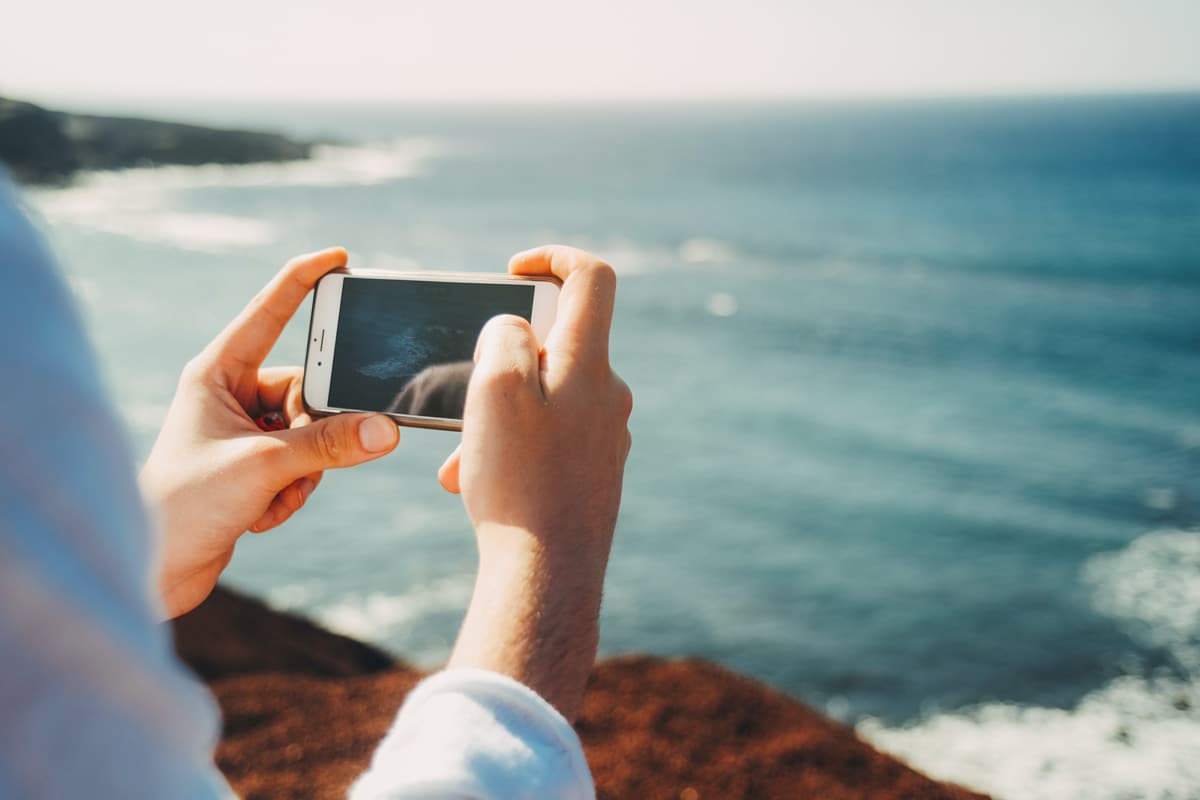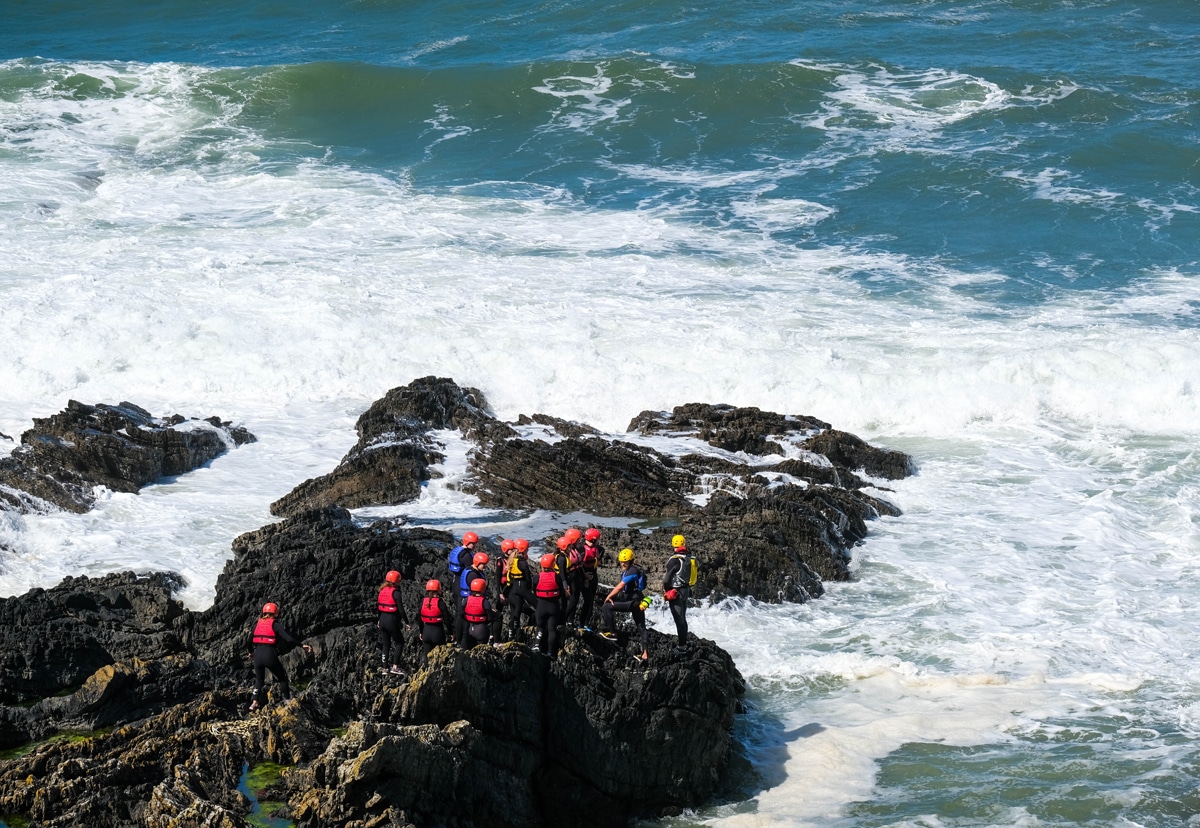The ascendency of the internet, as the mode for finding out about the world, well and truly demoted the once highly-prized travel guide, not to mention the travel agent. But it wasn’t until the advent of the smartphone – in all its connected, mobile and image-capturing glory – that where people go, how they get there, where they stay, and what they do when they arrive, changed in such a myriad of ways.
The perfect break can be discovered and booked on the same device that will tell you how to find the hotel, translate your menu and capture your memories with a rose-tinted filter.
The Insta break

Instagram has played a major part in the democratisation of travel content, where success is measured in followers and likes; a prime example of the travel power of the smartphone.
Control of the holiday narrative, once owned by a travel agent, select travel writers and publishers, has long since proliferated. Hotels have launched TV stations, airlines have curated and created enough online content to sustain any departure lounge wait, and influencers have made a business from a stopover and share approach. Which platform has been key to getting all of this out there? Instagram.
The most visual of the social media platforms, people have designed their entire holiday around a hashtag; for travel brands, it’s the channel for reaching the audience you don’t already have. But it’s a busy place and not everyone is on board with the Insta break.
Who's responsible?
The pulling power and influence of digital platforms for travel hasn’t been without a negative fallout, from property market distortion to travel excess.
Shortly after Airbnb filed its IPO to list on the US stock market – 13 years after the digital holiday lettings business was founded – one of its founders reflected on the problems the business model had created. In an interview with Monocle 24 radio (of Monocle magazine) CEO Brian Chesky said “Travellers going to a community is not bad. What we want is to not have everyone flood one city.”
Over-tourism has been a growing concern associated with Airbnb, and Instagram, where the fear of missing out (FOMO) associated with social media groundswells drives up visitor numbers to unprecedented levels.
Then there’s the tourist spots that have suffered the terror of TripAdvisor. Subjective and selective reviews through to sponsored positive posts distorting the picture. Anyone can review a restaurant or hotel bar right there, on the spot, but does that mean you can trust what you read? Or, do you care what someone else happened to think of the furniture and quality of the highchairs?
So, in this world, where the travel media production unit, the smartphone, is all powerful, where digital platforms pull in the guests, where is the opportunity and the place for travel brands as publishers?
Megatrends and counter currents

The transformation of travel brought by the internet and its devices isn’t immovable or unshakeable. If over-tourism was a concern, witness the tourism transformation of 2020 as the world reacted to the Covid-19 pandemic: highly restricted or banned international travel and staycation surge; travel went local. These moments will create new challenges and opportunities, at the same times as the megatrends press on.
What’s borne out through the long-run changes and shorter-term pressures, is the connection and authenticity brands can build with their audience.
So, as 2021 began, good old fashioned emails were cutting through in a digitally busy and saturated moment. In April 2020 organic reach on the social media platform Facebook was 5%, while almost 80% of marketers were reporting higher email engagement.
When it comes to the publishing platforms, it hasn’t all been online. For the captive audience, on-train or in-flight print publications have lasting appeal. It seems the same can be said for at least some travel books.
In her Guardian article, The travel guidebooks we still love, Lois Pryce quotes Bryn Thomas, founder of Trailblazer Guides, David Mantero at Stanfords bookshop and Andrew Dawson of the Wainwright Society. All concluded that the continued appeal of titles such as The Trans-Siberian Handbook, Japan by Rail and the seven-volume Pictorial Guide to The Lakeland Fells was down to a mixture of authenticity, trust, “authorial voice”, storytelling and inspiration.
It’s a reminder that it’s what you say that really counts and resonates, rather than the platform you’re on. It also points to the success of being specific, or finding your niche.
What the examples above have in common is that they’re sharing expertise on a specific place or journey. That’s value worth paying for that isn’t so easy to come by. There’s no doubt some specific info is best served real-time, on demand, like the cross-border train connection times, or the opening times for that temporary exhibition. Inspiring stories and trustworthy retelling may be best found elsewhere.
Do I have your attention?

“We need to stop interrupting what people are interested in and be what they are interested in.” So declared Ciaran Bonass, executive creative director at Virtue, the agency-arm of Vice Media.
For travel brands there is great potential in that sentiment, as well as the reasons why certain travel stories have staying power.
Successful travel publishing brings an authenticity, is entertaining and relevant. It knows its place. Here, the medium – print, video, article, website, social – is tactical. It’s providing what is useful and inspiring. Through speaking in that voice, the connections can be made that intrigue and excite visitors.
In 2020 and 2021, the way people booked and stayed with Airbnb was upended by the Covid-19 pandemic. Its ‘Made possible by hosts’ campaign – a series of photo album slideshows of an Airbnb stay set to music – was a marked shift in what the company was saying just a year before in its print and digital magazine.
This change spoke to the new way people were interacting with the brand – stays that connected distant families and were the beginning of new lives, in new places.
During this period, ‘how to’ searches on Google saw a precipitous and sustained rise. A chance for brands to take what they know and the skills their team have and share that with an audience both keen to learn, and, for some at least, new found time to do just that.
Then, just as digital has permeated life like never before, holidays had attracted new meaning. Forget FOMO, having a break was all about powering down the device and glorying in the joy of missing out and connecting with nature. Slowing down and taking more time to reflect was also driving interest in remote destinations and giving back to communities visited.
However these trends shape travel in the future, retaining that desire to tell authentic, entertaining and inspiring stories will connect in a way that a successful WiFi connection never can.